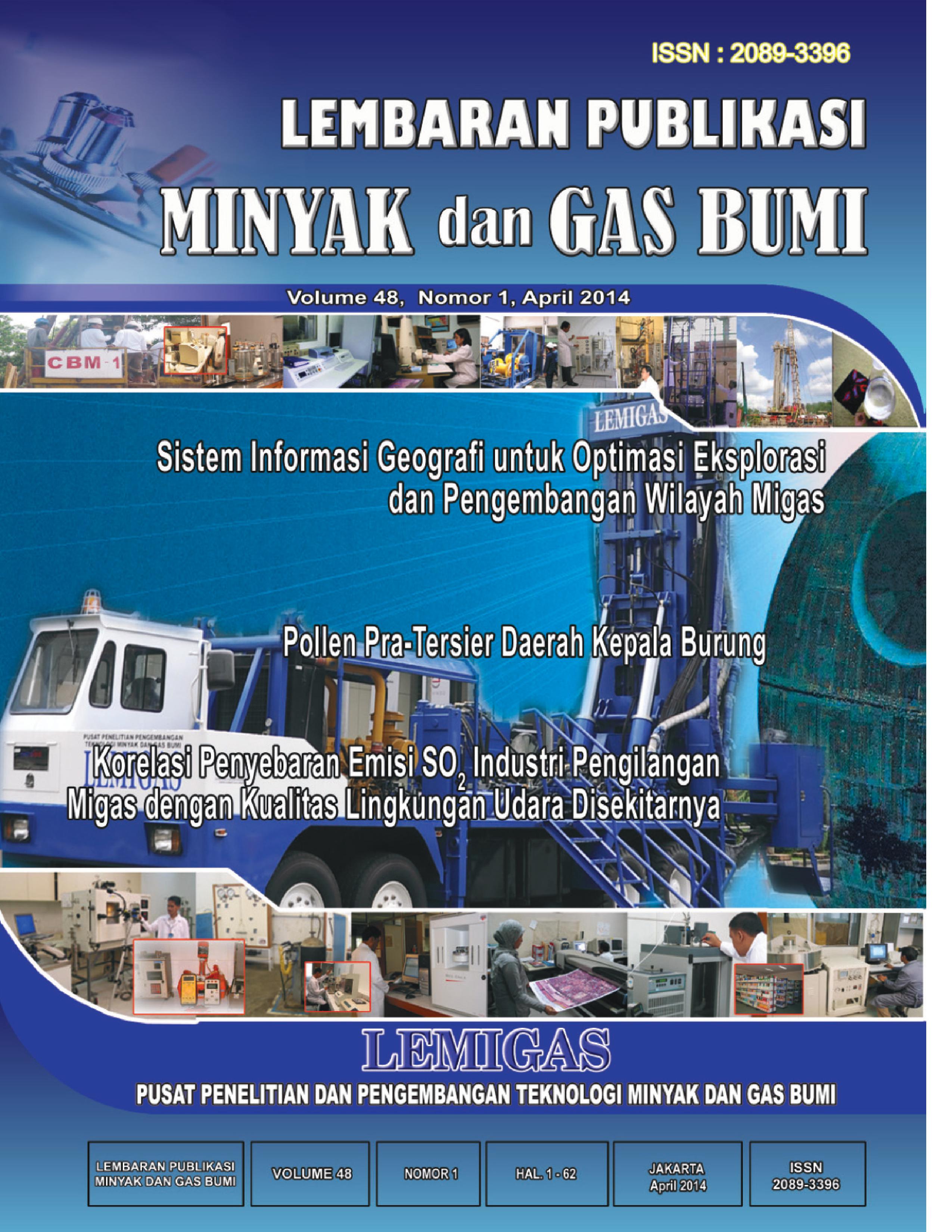Analisis Cost Benefit Pengembangan Cadangan Strategis
DOI:
https://doi.org/10.29017/LPMGB.48.1.229Kata Kunci:
cadangan strategis, biaya, manfaatAbstrak
Penetapan cadangan strategis perlu dirumuskan mengingat ketersediaan bahan baku kilang minyak mentah untuk keperluan Refinery Unit (RU) di beberapa kilang di Indonesia sering tidak menentu. Oleh karenanya diperlukan fasilitas penyimpanan sumber bahan baku untuk kilang minyak tersebut, agar kilang minyak yang ada di Indonesia dapat berfungsi dengan optimal dan menghasilkan produk keluaran dengan harga yang lebih ekonomis. Untuk itu dilakukan penelitian ini sebagai bahan masukan pemerintah dalam menetapkan besaran, lokasi dan pengembangan infrastruktur yang dapat mendukung penerapan cadangan strategis. Pada penelitian ini dilakukan analisis cost (biaya) yang dikeluarkan dalam mengembangkan cadangan strategis, dan benefit (manfaat) yang terdiri dari direct benefit dan indirect benefit. Analisis secara keseluruhan menggunakan Benefit Cost Rasio(BCR) untuk mengetahui besaran keuntungan/kerugian serta kelayakan pengembangan/cadangan strategis. Berdasarkan hasil analisis dihasilkan bahwa prioritas pengembangan cadangan strategis yang paling siap/layak dikembangkan adalah RU VII Kasim dengan nilai BCR indirect sampai 2.02, selanjutnya RU 3 Plaju, RU 5 Balikpapan, RU 6 Balongan, RU 2 Dumai, dan RU 4 Cilacap.
Establishment of strategic reserves should be formulated considering the availability of crude oil of some oil refineries in Indonesia which isusually uncertain. Therefore crude storage facilities are neededfor the refinery feedstock, so the existing oil refineries in Indonesia can function optimally and produce output at a more economical price. For that occasion this study was conducted as an input to the government in determining amount location and development of infrastructure to support the implementation of strategic reserves. This study analyzed the costs incurred in developing the strategic reserves, and the benefits which consist of direct benefits and indirect benefits. Overall analysis was using the benefit cost ratio (BCR) to determine the amount of gain/loss as well as the feasibility ofdevelopment/strategic reserves. Based on the analysis, the priority development of the most ready/feasible strategic reserve is RU Kasim with BCR indirect value of 2.02, followed by RU 3 Plaju, RU 5 Balikpapan, RU 6 Balongan, RU 2 Dumai, and RU 4 Cilacap
Referensi
Berger J., 2008,Statistical Decision Theory. The New Palgrave Dictionary of Economics.
Blanchard, David, 2010,Supply Chain Management Best Practices, 2nd.Edition. John Wiley & Sons.
Boardman, N. E., Cost-benefit Analysis, Concepts and Practice, NJ: Prentice Hal. 2006.
Boardman, N. E., 2006,Cost-benefit Analysis, Concepts and Practice, NJ: Prentice Hal.
David, Blanchard, Supply Chain Management Best Prac- tices, 2nd.Edition. John Wiley & Sons. 2010.
Dunn, William N., Public.Policy Analysis: an Introduc- tion. Longman. 2009.
Dunn, William N., 2009, Public.Policy Analysis: an Introduction. Longman.
Ellis, Kimberly, 2008,Production Planning and Inventory Control. McGraw Hill.
Ellis, Kimberly, Production Planning and Inventory Control. McGraw Hill. 2008.
Fajri Harisnanda, Ikhlashia Amaly, Alan Mario Gus- man, dkk, 2011, Analisis Sistem Rantai Pasok Min- yak, Universitas Andalas, Padang, 2011.
George A Pavellis, 1971, The Benefit Cost Ratio in Re- source Development Planning, Southern Journal of Agricultural Economics, 1971.
Giovanni Bellu L., 2012, Sosial Accounting Matrix (SAM) for Analysing Agricultural and Development Policies Conceptual Aspects and Examples, Food and Agricul- ture Organization of the United Nations, FAO, 2012.
Hasil Sensus Penduduk, 2010 – Data Agregat per propinsi, Badan Pusat Statistik. 2010.
Hasil Sensus Penduduk, 2010, 2010, Data Agregat per propinsi, Badan Pusat Statistik.
Hennlock Magnus, 2009, A Note on The Cost Benefit Ratio in Self Enforcing Agreements, Department of Economics, Sweden, 2009.
Horvath, Endre and. Douglas C. Frechtling, 1999, Esti- mating the Multiplier Effects of Tourism Expenditures on a Local Economy Through a Regional Input-Output Model, Journal of Traveo Research Vo. 37, 1999.
James J. Heckman, dkk, 2010, A New Cost Benefit and Rate of Return Analysis for The Perry Preschool Pro- gram, National Bureau of Economic Research, 2010.
James, Berger, Statistical Decision Theory. The New Palgrave Dictionary of Economics. 2008.
Jose de Sa, 2012, Global Refining, Bain & Company, 2012.
Keisuke, H., 2008,Decision Theory in Econometrics. The New Palgrave Dictionary of Economics. 2008.
Keisuke, Hirano, Decision Theory in Econometrics. The New Palgrave Dictionary of Economics. 2008.
Kress, George J.; Snyder., 1994,Forecasting and market analysis techniques: a practical approach. Westport, Connecticut, London: Quorum Books
Kress, George J.; Snyder., Forecasting and market analysis techniques: a practical approach. Westport, Connecticut, London: Quorum Books. 1994.
Makridakis, Spyros; Wheelwright, Steven; Hyndman, Rob J., Forecasting: methods and applications. New York: John Wiley & Sons. 1998.
Makridakis, Spyros; Wheelwright, Steven; Hyndman, Rob J., 1998,Forecasting: methods and applications. New York: John Wiley & Sons.
Nahmias, S., 2009,Production and Operations Analysis. Nahmias, Steven, Production and Operations Analysis. 2009.
Pindyck, Robert S., and Daniel L. Rubinfeld, Econo- metric Methods and Economic Forecasts, McGraw- Hill. 1998.
Pindyck, Robert S., and Daniel L. Rubinfeld., 1998, Econometric Methods and Economic Forecasts, McGraw-Hill.
Pyatt. Graham and Jeffry I Round, 2004, Multifier Effects and The Reduction of Poverty, University of Warwick, 2004.
Rahman. Maizar, Cadangan Strategis Minyak Untuk Keamanan Energi Indonesia, Lembaran Publikasi Lemigas Vol. 45, 2011.
Rescher, N., 1998,Predicting the future: An introduction to the theory of forecasting. State University of New York Press.
Rescher, Nicholas, Predicting the future: An introduction to the theory of forecasting. State University of New York Press. 1998.
Timothy J. Kehoe, 1996, Social Accounting Matrices and Applied General Equilibirum Model, Federal Reserve Bank of Minneapolis Research Department, 1996.
Wayan R. Susila, dan IDM Darma Setiawan, 2007, Peran Industri Berbasis Perkebunan dalam Pertum- buhan Ekonomi dan Pemerataan: Pendekatan Sistem Neraca Sosial Ekonomi, Jurnal Agro Ekonomi, Vol- ume 25, 2007.
Weimer, D., Vining, 2005, A. Policy Analysis: Concepts and Practice. Fourth Edition.
Weimer, D., Vining, A. Policy Analysis: Concepts and Practice. Fourth Edition. 2005.
Victor S. Purba, 2008, Penentuan Total Cadangan Minyak Nasional dengan Metode Perhitungan Kurva Puncak Hubbert dan Pendekatan Numerikal terhadap Grafik Produksi Minyak Nasional Indonesia, ITB, 2008.











